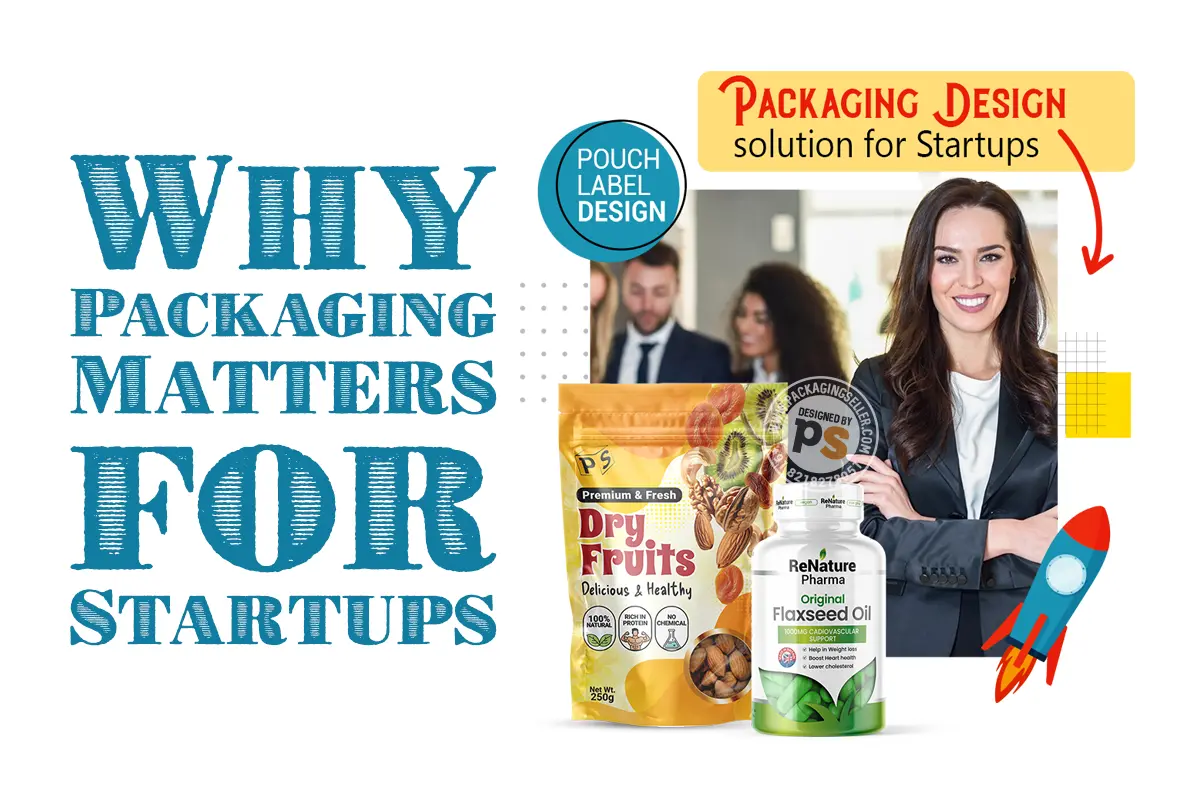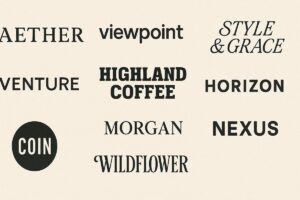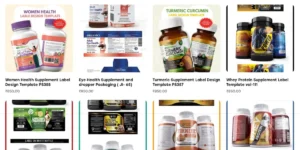🧩 1. Introduction – Why Packaging Matters for Startups
When launching a new product, your packaging is your first salesperson.
Before anyone touches your product, they see your design — and that’s where the decision starts.
Good packaging design doesn’t just protect the product. It:
-
Builds trust and brand recognition
-
Creates an emotional connection
-
Communicates quality
-
Helps you stand out in stores or on Amazon
In short, packaging is marketing in physical form — and smart startups use it to grow faster.
🎨 2. Understanding Packaging Design Basics
Packaging design means creating the outer look of your product — including colors, fonts, shapes, icons, and printed details — to attract buyers and share your brand story.
There are 3 main goals:
-
Functionality: Protects the product safely
-
Information: Shares what’s inside (ingredients, directions, FSSAI, barcode, etc.)
-
Attraction: Visually catches the customer’s eye
👉 If your packaging design balances all three, you’re already ahead of most small brands.
📦 3. Types of Packaging for Small Businesses
Different businesses need different packaging styles:
-
Labels – For bottles, jars, and boxes (e.g., supplements, cosmetics)
-
Pouches – For snacks, dry fruits, and powders
-
Boxes or Cartons – For premium or fragile products
-
Wrappers and Sleeves – For budget-friendly or seasonal products
💡 Tip: New startups can begin with label-based packaging and later upgrade to custom full-pouch printing once volumes grow.
(“Full Pouch Design vs Label Design – Which Is Better for Startups”)
🖌️ 4. Key Elements of a Professional Packaging Design
Your packaging should tell your story visually.
The most important design elements are:
| Element | Purpose |
|---|---|
| Logo & Brand Name | Instantly identifies your product |
| Color Scheme | Builds emotion (e.g., green = organic, gold = premium) |
| Typography | Makes your message readable and stylish |
| Icons & Imagery | Simplifies communication |
| Information Layout | Keeps it clear and regulatory compliant |
(“Logo, Color, and Typography – The 3 Core Elements of Good Packaging Design”)
🪶 5. How to Choose the Right Material and Finish
Choosing the right material defines how your packaging looks and feels.
| Material | Common Use | Key Benefit |
|---|---|---|
| PET / BOPP | Food, Spices, Snacks | Glossy and durable |
| Kraft Paper | Organic & Eco Products | Natural look |
| Metalized Film | Premium Snacks, Coffee | Metallic shine |
| LDPE | Refills, Liquid Pouches | Flexible and low-cost |
Finishing adds the final magic:
-
Gloss Lamination: Vibrant, shiny surface
-
Matte Lamination: Soft, minimal feel
-
Foil Printing / UV: Adds luxury and highlights key areas
🖨️ 6. Printing Techniques Every Entrepreneur Should Know
There are several printing methods — each fits a different budget:
| Method | Ideal For | Description |
|---|---|---|
| Digital Printing | Small quantities | Fast, low setup cost |
| Flexo Printing | Bulk packaging | Great for consistent color |
| Offset Printing | Cartons & boxes | Sharp, professional finish |
| UV Printing | Premium labels | Glossy raised texture |
(“How UV Printer Works” and “How Variable Data Printing Solves Customization Challenges”)
💰 7. How to Create Cost-Effective Packaging for Small Quantities
Many startups believe good packaging is expensive — not true!
Here’s how to save money:
-
Use readymade templates instead of custom designs
-
Choose digital printing for small runs
-
Print in standard sizes to reduce wastage
-
Keep designs simple but consistent
💡 PackagingSeller.com offers editable templates starting at ₹850 that you can customize with your logo and product details.
🌈 8. Branding Through Packaging – Make Your Product Stand Out
Your packaging is a silent brand ambassador.
It reflects your personality, values, and promise.
Tips to make it memorable:
-
Use a unique color tone that becomes your signature
-
Keep your design consistent across all products
-
Add a small emotional line (“Made with Love,” “100% Honest Ingredients”)
-
Ensure your packaging looks good online and offline
(“How Personalized Printing Boosts Customer Loyalty”)
⚠️ 9. Common Mistakes Startups Make in Packaging
Avoid these frequent beginner errors:
-
Poor print readability or missing FSSAI info
-
Wrong size labels or misaligned designs
-
Choosing cheap materials that tear easily
-
Overcomplicated visuals that confuse buyers
-
Ignoring printing bleed and margin safety
(“Common Label Printing Errors and How to Avoid Them”)
✅ 10. Pre-Print Checklist – Before You Send to Printer
Before final printing, verify:
-
✔️ All text is proof-read
-
✔️ Bleed area and cutting lines are correct
-
✔️ Fonts are outlined
-
✔️ Barcode, net weight, MRP, and date area added
-
✔️ Exported file in AI + PDF + JPEG formats
Download free → [Readymade packaging design templates by PackagingSeller]
🧰 11. Tools and Templates to Simplify Your Packaging Design
Recommended tools:
-
PackagingSeller.com – Editable packaging templates
-
Packvity (coming soon) – Online dieline and 3D mockup maker
-
Canva or Adobe Illustrator – For text editing and layout adjustment
-
Smarty Mockups / Photoshop – For realistic product previews
(“Top 10 Ready-to-Edit Packaging Templates for Startups”)
🌟 12. Final Thoughts – Start Small, Design Smart
You don’t need a big budget to create great packaging.
You just need clarity, consistency, and creativity.
-
Start with a ready template
-
Personalize it for your brand
-
Print small batches
-
Collect feedback
-
Then scale up with custom designs
Your packaging is more than just a wrapper — it’s your story, in visual form.







